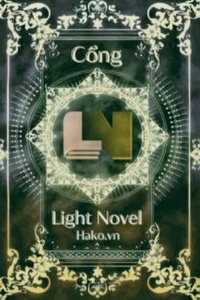Chương này là chương thứ hai tập hợp các sách tham khảo, tôi cố ý chọn một chút luận văn tương đối phổ cập khoa học cùng công thức tương đối ít, trong đó phần lớn đều là khái quát.
Ở chương này xem như động não dày đặc, sách tham khảo cũng là nhiều nhất.
Nhưng chương thứ nhất nội dung khoa học đối với kịch bản thôi động tác dụng quan trọng hơn so với chương thứ hai, chương thứ hai nội dung khoa học càng là vì bù đắp thiết lập, cho nên cũng không cần nhìn sách tham khảo (chương thứ nhất cũng không cần lắm, nhưng lại đối với hiểu rõ nội dung có trợ giúp lớn), nhưng vì cẩn thận vẫn là đẩy lên.
1. Meyer-Vernet, N. (2007). Basics of the solar wind. Cambridge University Press.
2. Parker, E. N. (1965). Dynamical theory of the solar wind. Space Science Reviews, 4(5-6), 666-708.
3. Fermi, E. (1949). On the origin of the cosmic radiation. Physical review, 75(8), 1169.
4. Ney, E. P. (1959). Cosmic radiation and the weather. Nature, 183(4659), 451-452.
5. Gangale, T. (2005). Marssat: assured communication with Mars. Annals of the New York Academy of Sciences, 1065(1), 296-310.
6. Knoll, A. H. , Bambach, R. K. , Canfield, D. E. , & Grotzinger, J. P. (1996). Comparative Earth history and Late Permian mass extinction. Science, 273(5274), 452-457.
7. Dine, M. , & Kusenko, A. (2003). Origin of the matter-antimatter asymmetry. Reviews of Modern Physics, 76(1), 1.
8. Close, F. (2018). Antimatter. Oxford University Press, USA.
9. Dove, J. , Kerns, B. , McClellan, R. E. , Miyasaka, S. , Morton, D. H. , Nagai, K. , . . . & Ye, Z. (2021). The asymmetry of antimatter in the proton. Nature, 590(7847), 561-565.
10. Shahrubudin, N. , Lee, T. C. , & Ramlan, R. J. P. M. (2019). An overview on 3D printing technology: Technological, materials, and applications. Procedia Manufacturing, 35, 1286-1296.
11. Geim, A. K. (2009). Graphene: status and prospects. science, 324(5934), 1530-1534.
12. Huang, X. (2009). Fabrication and properties of carbon fibers. Materials, 2(4), 2369-2403.
13. Chung, D. (2012). Carbon fiber composites. Elsevier.
14. Che, D. , Saxena, I. , Han, P. , Guo, P. , & Ehmann, K. F. (2014). Machining of carbon fiber reinforced plastics/polymers: a literature review. Journal of Manufacturing Science and Engineering, 136(3).
15. Riess, J. G. (2006). Perfluorocarbon-based oxygen delivery. Artificial cells, blood substitutes, and biotechnology, 34(6), 567-580.
16. Riess, J. G. (2005). Understanding the fundamentals of perfluorocarbons and perfluorocarbon emulsions relevant to in vivo oxygen delivery. Artificial cells, blood substitutes, and biotechnology, 33(1), 47-63.
17. Grifoni, M. , & Hänggi, P. (1998). Driven quantum tunneling. Physics Reports, 304(5-6), 229-354.
18. Rom, R. (2023). The Principal Role of Antimatter. Journal of High Energy Physics, Gravitation and Cosmology, 9(2), 461-466.
19. Levich, V. G. , & Krylov, V. S. (1969). Surface-tension-driven phenomena. Annual review of fluid mechanics, 1(1), 293-316.
20. Popinet, S. (2018). Numerical models of surface tension. Annual Review of Fluid Mechanics, 50, 49-75.
21. Matsumoto, M. , & Tanaka, K. (2008). Nano bubble—Size dependence of surface tension and inside pressure. Fluid dynamics research, 40(7-8), 546.
22. Putterman, S. J. (1974). Superfluid hydrodynamics. Amsterdam, 3.
23. Vollhardt, D. , & Wolfle, P. (2013). The superfluid phases of helium 3. Courier Corporation.
24. Wheatley, J. C. (1975). Experimental properties of superfluid He 3. Reviews of modern physics, 47(2), 415.
25. Armstrong, M. A. (2013). Basic topology. Springer Science & Business Media.
26. Kelley, J. L. (2017). General topology. Courier Dover Publications.
27. Orgel, L. E. (1994). The origin of life on the earth. Scientific American, 271(4), 76-83.
28. Orgel, L. E. (1998). The origin of life—a review of facts and speculations. Trends in biochemical sciences, 23(12), 491-495.
29. Küppers, B. O. (1990). Information and the Origin of Life. Mit Press.
30. Brillouin, L. (1953). The negentropy principle of information. Journal of Applied Physics, 24(9), 1152-1163.
31. Von Stockar, U. , & Liu, J. S. (1999). Does microbial life always feed on negative entropy? Thermodynamic analysis of microbial growth. Biochimica et Biophysica Acta (BBA)-Bioenergetics, 1412(3), 191-211.
32. Hongbao Ma, S. C. (2005). Nature of Life. Life Science Journal 2005b, 2(1), 7-15.
33. Schrodinger, E. (1956). What is life? . What Is Life.
34. Dronamraju, K. R. (1999). Erwin Schrödinger and the origins of molecular biology. Genetics, 153(3), 1071-1076.
35. Ryan, J. L. (2012). Ionizing radiation: the good, the bad, and the ugly. Journal of Investigative Dermatology, 132(3), 985-993.
36. United Nations Scientific Committee on the Effects of Atomic Radiation. (1988). Sources, effects and risks of ionizing radiation.
(còn tiếp)






